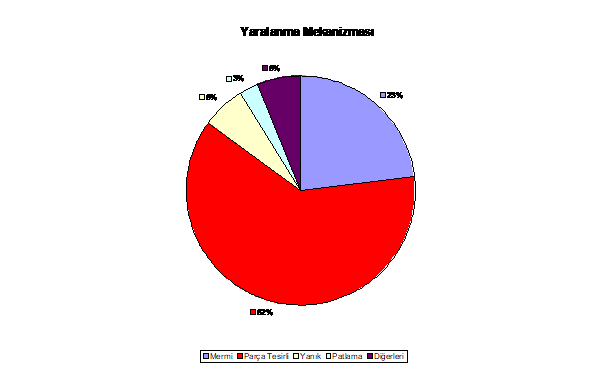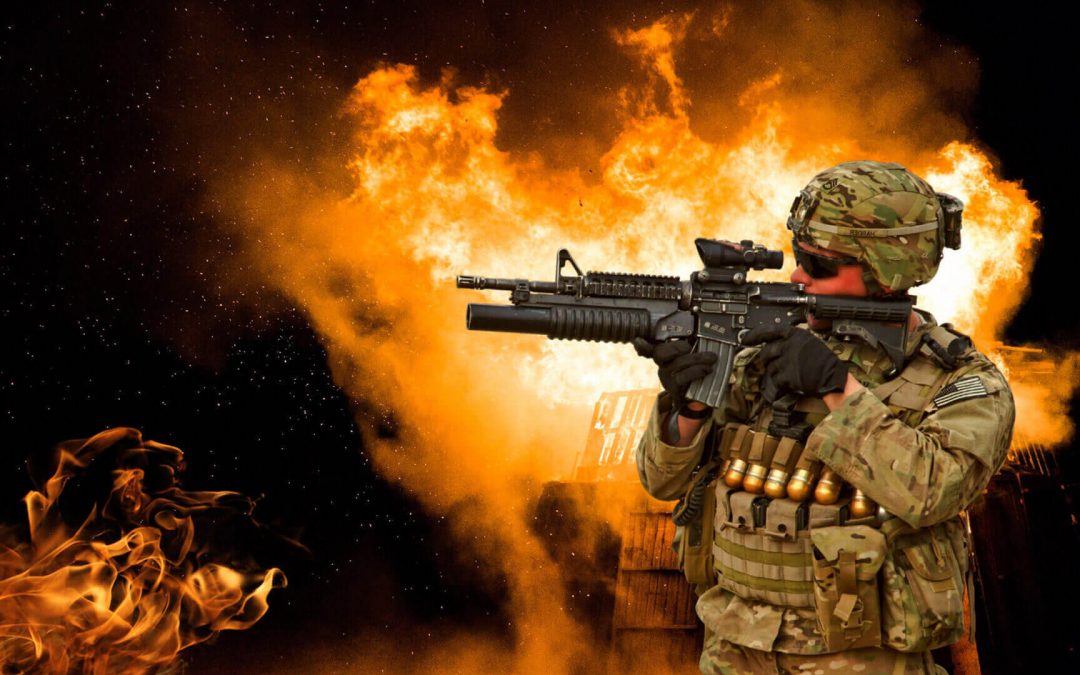The fate of the injured is in the hands of the first responder with a tampon. Dr. Nicholas Senn (1844-1908)
Losses due to uncontrollable haemorrhage reduce troop morale and have a profound impact on the armed forces, society and families. For example, one of the most important factors for the psychological trauma known as post-traumatic stress syndrome (PTSD) is losing a comrade in arms without being able to do anything. This was easily observed in both operations carried out by the Turkish Armed Forces in 1974.
- During the First Operation, a soldier from my company was shot in the head with a long-barreled gun during the attack in the direction of Kyrenia coastal defence from the White House in the Five Fingers Mountain Range in Cyprus. Since there was no medical team in my unit, I intervened myself. I intervened by taking out tampons from more than one harp pack in the harp bag I had with me, but I could not stop the bleeding. He was martyred at the front due to blood loss in the position we were in, screaming in my lap until the morning (I still hear his last words and screams in my dreams).
- In the direction of the White House Finnish Camp, Pastor’s Mansion, Kyrenia, a commando corporal in my company was shot in the crotch and his medium-sized veins were torn. I used the tampons I took from a few war bags, but I could not stop the bleeding. Since the incident happened during the attack, I had to leave the wounded. Since it was not possible to change my uniform, I carried his blood on me for 2 months.
- During the 2nd Peace Operation, I was assigned as the commander of the 2nd parachute battalion’s vanguard company in the offensive from the south of Kanlı Dere in the direction of Nicosia-Tymbou-Vatili-Lysi-Kondea-Paşaköy. I was assigned the task of taking the back security of the Ankara Tank Demonstration Regiment. With the offensive, 1 tank exploded by hitting a mine in the passage between Nicosia and Kanlı Dere. A tank non-commissioned officer’s arm was severed and he was running in my direction, holding it like a sword, shouting ‘Allah Allah Allah’. I caught him, after saving him from the psychological shock he was in, I used the tampons in the combat pack and made a tourniquet with the sleeve of his uniform. However, I could not stop the bleeding. We continued the offensive and I do not know the fate of the non-commissioned officer.
In the asymmetric warfare and GNH conditions of the current era, it is known that snipers, sabotage, mines and hot contact are among the threats to which troops in entrenched formations will be exposed. For example, an attack by a specially trained five-man team can cause unexpected losses and casualties. If this team attacks with heavy machine guns, rocket launchers or LAW weapons and sniper rifles, the casualties caused are high. At the end of the attack, the unit may lose hours to secure the perimeter. In this situation, it takes time for the nearest helicopter ambulance to arrive for initial damage assessment and triage. If the landing safety of the arriving helicopters is not ensured, casualties increase rapidly during the waiting time in the air. When we analyse the scientific studies on this subject, we obtain the following results. One of the most important elements in the combat or operational planning phase is the analysis of the risks that soldiers may be exposed to. Among these risks, the element that requires the most comprehensive planning is the knowledge of the variables required to minimise losses. To summarise briefly, the effect of the weapons to be exposed to, the cause of the injuries, their distribution on the body, the level of danger, the material and technical knowledge of the elements that can provide first aid, their competence in cases where evacuation will take a long time in a conflict environment, and the establishment of transfer channels to a hospital with advanced medical facilities or to appropriate field hospitals. The armed forces of developed countries carry out intensive studies on this subject.
When the data obtained are compared with the information of previous and potential battles, the results obtained help to take detailed measures to minimise casualties and casualties, to plan logistic support and to increase the effectiveness of the applications.
 The most important of these studies, WDMET (Wound Data and Munitions Effectiveness Team) started with the recording of 7898 cases of casualty and wounded statistics obtained from 3000 conflicts in 1965-67. These records covered only 4-5 per cent of the total casualties and losses of the US army. Later, by combining with the data banks of the British and Israeli armed forces and adding the US operations in Somalia and Panama, more than 4100 contemporary combat casualty statistics were created. Since then, all armies and military medical scientists have been working intensively to collect and analyse existing cases. In our country, this work is carried out within GATA. In order to approach the subject from a scientific perspective, it is essential to analyse the models obtained from the available statistics. With the WDMET data, it is known that the most detailed statistical studies available on combat casualties, injury models and how to minimise losses if the wounds are treated in the most effective way are carried out. In the light of these models, the armed forces of developed countries have provided full military medical response logistics (well-equipped field hospitals, response levels, transport systems, rehabilitation services, etc.), which constitute one of the pillars of the logistical preparations they make before the operation, and first aid training on a continental basis and the simplest, fastest and most effective use of materials in the first response. Looking briefly at the concept of combat injuries and casualties with WDMET data, it is useful to recall that D. D. Trunkey’s 1983 report on accidents and fatalities to civilians analysed deaths in the first hour, early (2-3 hours later) and late (several weeks after injury). Scientific observations of accidents involving civilians show that 50 per cent of deaths occur in the first hour, 30 per cent in the early hours and 20 per cent in the late hours. In the light of this distribution of injuries and deaths, the ‘Golden Hour’ concept has gained importance and has been accepted by the emergency medicine departments of almost all countries of the world. For this reason, it is known that how soon the ambulance services arrive at the scene of the incident and the correct and effective intervention they make to the injured is more important than the injured who is delivered to a full-fledged hospital hours later. However, the injury model is a very important issue in this study. The fact that the wound model of the civilian population examined later increased from blunt wounds to penetrating wounds, and that 80-90% of the wounded exited in the first 5 minutes in all injuries actually determined that the ‘Golden Hour’ concept is the ‘Golden First 5 Minutes’10: For this reason, WDMET data shows how many wounded can be saved by performing the first intervention in the first 5 minutes in the field of military medicine today. (Fig 1)
The most important of these studies, WDMET (Wound Data and Munitions Effectiveness Team) started with the recording of 7898 cases of casualty and wounded statistics obtained from 3000 conflicts in 1965-67. These records covered only 4-5 per cent of the total casualties and losses of the US army. Later, by combining with the data banks of the British and Israeli armed forces and adding the US operations in Somalia and Panama, more than 4100 contemporary combat casualty statistics were created. Since then, all armies and military medical scientists have been working intensively to collect and analyse existing cases. In our country, this work is carried out within GATA. In order to approach the subject from a scientific perspective, it is essential to analyse the models obtained from the available statistics. With the WDMET data, it is known that the most detailed statistical studies available on combat casualties, injury models and how to minimise losses if the wounds are treated in the most effective way are carried out. In the light of these models, the armed forces of developed countries have provided full military medical response logistics (well-equipped field hospitals, response levels, transport systems, rehabilitation services, etc.), which constitute one of the pillars of the logistical preparations they make before the operation, and first aid training on a continental basis and the simplest, fastest and most effective use of materials in the first response. Looking briefly at the concept of combat injuries and casualties with WDMET data, it is useful to recall that D. D. Trunkey’s 1983 report on accidents and fatalities to civilians analysed deaths in the first hour, early (2-3 hours later) and late (several weeks after injury). Scientific observations of accidents involving civilians show that 50 per cent of deaths occur in the first hour, 30 per cent in the early hours and 20 per cent in the late hours. In the light of this distribution of injuries and deaths, the ‘Golden Hour’ concept has gained importance and has been accepted by the emergency medicine departments of almost all countries of the world. For this reason, it is known that how soon the ambulance services arrive at the scene of the incident and the correct and effective intervention they make to the injured is more important than the injured who is delivered to a full-fledged hospital hours later. However, the injury model is a very important issue in this study. The fact that the wound model of the civilian population examined later increased from blunt wounds to penetrating wounds, and that 80-90% of the wounded exited in the first 5 minutes in all injuries actually determined that the ‘Golden Hour’ concept is the ‘Golden First 5 Minutes’10: For this reason, WDMET data shows how many wounded can be saved by performing the first intervention in the first 5 minutes in the field of military medicine today. (Fig 1)

Fig. 1. %70 of the total casualties are lost in the first 5 minutes and %85 of the total casualties are lost in the first 30 minutes.
In this context, the scientific approach did not neglect to categorise the causes of death on the battlefield. At the same time, in the study published by Arnold and Cutting11 , when we analyse the pathophysiology of the deaths of the wounded in the WDMET data, the most common cause of death is bleeding (Fig.2). In addition, studies on the mechanism of injury (Fig.3) show the characteristics of the Vietnam War.

Fig.2 Causes of loss, CNS refers to the destruction of the central nervous system and the second CNS refers to deaths occurring after the wound. Shock is also a condition caused by bleeding that cannot be stopped after medical intervention.
When analysed in itself, 20% of the above-mentioned deaths from haemorrhage are arterial/vein ruptures. If appropriate first aid was given on time, many of them could have been saved. In addition, according to WDMET data, although no bleeding shock was observed in the hospital, 10% of the injured group was found to be in bleeding shock at the first hospital admissions. The remaining 80 per cent were injured in about 10 different anatomical regions and lived for about 10 minutes. The assistance that can be provided to these injured people is based on stabilisation with advanced first aid and keeping the metabolism stable until surgical intervention with advanced biotechnology-based systems.

Fig 3. Mechanisms of Injury

